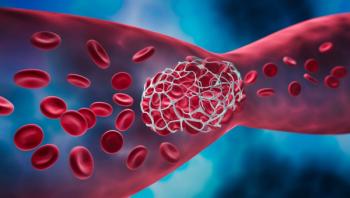
Gene Therapy for Severe Hemophilia B Could Be More Cost Effective Than Current Treatments
An analysis found that a single dose of gene therapy would be more cost-effective than on-demand or prophylaxis factor replacement in 92% of cases.
Hemophilia is a hereditary, lifelong, and life-threatening disorder that, until recently, has had no prospective cure. Gene therapy might change that, but the cost has been predicted to be in the millions.
Individuals with hemophilia have a gene mutation that causes a deficiency in one of two factors integral in the blood coagulation pathway. In hemophilia A, factor XIII is missing; in hemophilia B, it’s factor IX. Hallmark symptoms of the disease include excessive bleeding after internal or external trauma. Areas particularly affected are joints, muscles, and soft tissues. In severe cases, bleeding can occur spontaneously.
Current therapy for hemophilia consists of on-demand or prophylactic intravenous infusions of replacement clotting factor to treat or prevent bleeding. Prophylaxis therapy requires several infusions per week, and the cost can range from $300,000 to $776,000 per year.
Recent research on gene therapy introduces the possibility to significantly reduce or eliminate the need for factor replacement therapy. Treatment is designed as a one-time intravenous injection consisting of an adeno-associated virus vector carrying instructions for liver cells to produce deficient coagulation factors.
At least three gene therapies for hemophilia B are currently in late-stage clinical trials, and all have demonstrated at least a 90% reduction in bleeding events and the need for factor replacement. If all goes well, gene therapy can be a potential cure for hemophilia, but the cost has been estimated at $2 to $3 million per patient.
St. Jude Children’s Research Hospital conducted a cost-effectiveness analysis of gene therapy for severe hemophilia B and found that the novel treatment may be more cost-effective than current therapy despite its sky-high price tag. In the analysis,
Researchers calculated a total per-patient cost of $87,198 for the manufacturing, distribution, and five-year follow-up of gene therapy for severe hemophilia B. Taking into account the cost of lifelong factor replacement therapy, bleeding complications during on-demand treatments, orthopedic surgery, and hospitalizations, the analysis found that a single dose of gene therapy would be more cost-effective than on-demand or prophylaxis factor replacement in 92% of cases.
According to the authors, gene therapy is in a unique position when it comes to cost analysis.
Newsletter
Get the latest industry news, event updates, and more from Managed healthcare Executive.

















































